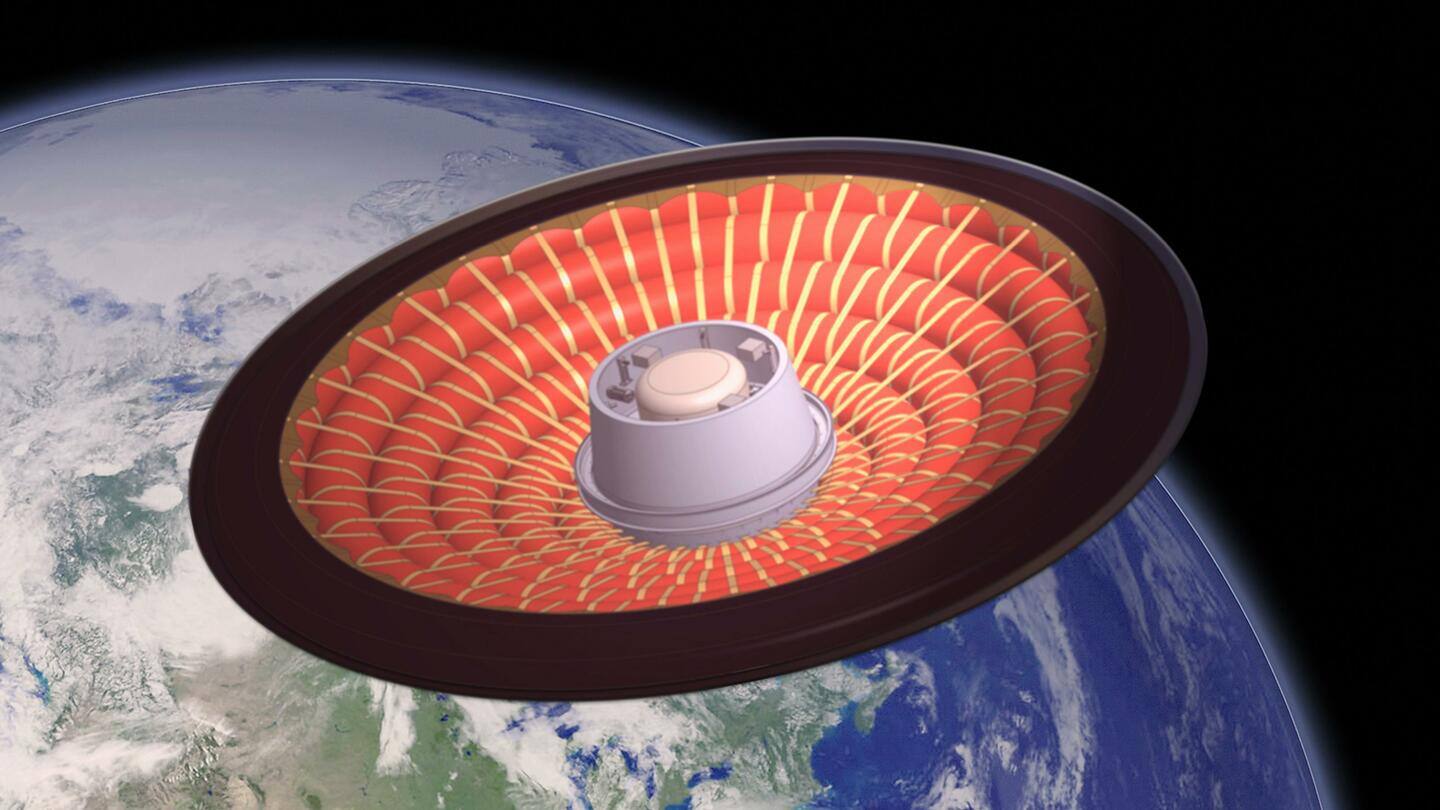
NASA LOFTID inflatable heat shield technology is a success
What's the story
The LOFTID (Low-Earth Orbit Flight Test of an Inflatable Decelerator) test is a success, according to early results reported by NASA. The inflatable heat shield technology can support future manned missions to Mars.
The aeroshell took off along with the JPSS-2 (Joint Polar Surveyor System-2) weather satellite on November 10. It has been successfully recovered from the Pacific Ocean, about 800km from Hawaii.
Context
Why does this story matter?
The initial results following LOFTID's test demonstration are encouraging. It brings NASA closer to its ambition of landing astronauts on Mars.
The aeroshell, costing about $93 million, can carry 20 times the payload of the Perseverance Rover and can even bring back payloads from International Space Station.
Measuring 6-meters in width, it is the largest blunt body aeroshell to ever go through atmospheric entry.
Twitter Post
Here's the official declaration from NASA
Early results show that NASA's Low-Earth Orbit Flight Test of an Inflatable Decelerator, or #LOFTID, launched on Nov. 10, was a success!
— NASA Marshall (@NASA_Marshall) November 18, 2022
This technology could one day be used to land humans on Mars.
Learn more HERE>> https://t.co/G3guD96OGs
Deployment
LOFTID and the JPSS-2 satellite were launched on November 10
LOFTID was launched along with the JPSS-2 weather satellite on the United Launch Alliance Atlas V rocket on November 10.
Almost after an hour, the aeroshell was released by the Centaur upper stage. The heat shield inflated after it deployed from its parent Atlas V rocket.
The aeroshell made its reentry to Earth, falling at a rate of approximately 29,000km/h.
Information
LOFTID made a parachute-guided landing in the Pacific Ocean
Close to the end of the demonstration, LOFTID slowed down its speed to less than 130km/h. Parallelly, the parachutes on LOFTID opened up, causing the aeroshell to make a gentle splashdown in the Pacific Ocean, near Hawaii.
Official statement
Early results show that the test demonstration was successful
"The team recovered the LOFTID aeroshell within a few hours, and early indications show that the demonstration was successful," stated NASA on its official blog.
"In addition to achieving its primary objective of surviving the intense dynamic pressure and heating of re-entry, it appears that the aft side of the heat shield - opposite LOFTID's nose - was well protected from the re-entry environment."
Future studies
The complete investigation behind the demonstration can take a year
Researchers claim that the entire investigation behind LOFTID's test demonstration might take up to a year.
One thing is sure for now, that is LOFTID can keep payloads safe during reentry to Earth.
This initial success opens up the possibility of delivering heavy payloads to other cosmic locations such as Mars and Venus, and even to Saturn's moon, Titan.